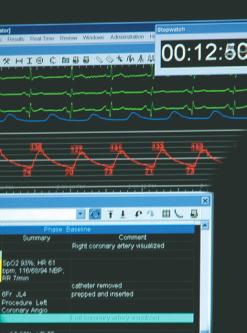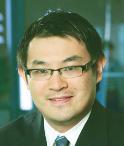Basic HTML Version






Centegra
HealthSystem
7
To learn more about Centegra Health System, go to
centegra.org.
health
news
F
Centegra Stroke Centers
FOR BOB STONE, November 1, 2011,
began as an ordinary Tuesday. That
morning, he drove to a friend’s house for
help installing new points in his truck.
His friend was busy, so Stone returned
home. The next thing he knew, he was
lying on his bathroom floor.
“I had no idea what happened,” he says.
What had happened was an
ischemic stroke. In this type of stroke,
a clot interferes with the brain’s blood
supply—and brain cells die. Stone had
no symptoms before he fell. Afterward,
however, his face drooped on the left side.
He couldn’t swallow. He couldn’t speak.
“I couldn’t get the words out,” he says.
“All I did was mumble.”
STROKE SYMPTOMS
According to Hsiong Chen, MD, a
neurologist with Centegra Physician Care,
Stone’s symptoms
were typical: no
warning signs,
weakness on one side
and slurred speech.
Numbness; vision
changes; or a sudden,
severe headache also
can signal a stroke.
THE RIGHT PLACE IN A CRISIS
When Stone had his stroke, he was
lucky in a couple of ways. First, his
fiancee, Barb, quickly contacted a
neighbor, who called 911. Second, he
was taken to the Centegra Hospital–
Woodstock Emergency Department (ED).
In 2011, both Centegra Hospitals—
McHenry and Woodstock—received
certification from The Joint Commission
as primary stroke centers.
“This means we meet the criteria
for the American Stroke Association’s
guidelines,” Dr. Chen says. That translates
into the highest level of care for Centegra
stroke patients such as Stone.
STROKE TREATMENT AT CENTEGRA
Care begins in the field—Centegra’s
Emergency Medical Technicians are
trained to assess symptoms and relay
information to the hospital. When stroke
patients arrive in the ED, a neurologist
determines whether the clot-busting
drug tissue plasminogen activator (TPA)
is appropriate. Patients must meet strict
criteria for this treatment, including
arriving at the hospital within three
hours of stroke onset and having an
appropriate health history.
In the first 24 hours, patients
who receive TPA are monitored
in the Intensive Care Unit, where
electrocardiogram (EKG) electrodes
track their heart rhythm. Irregular heart
rhythms can increase the risk for stroke,
so if one is detected, it can be treated to
help prevent further strokes. After they’ve
been stabilized, patients go to telemetry.
Centegra’s stroke treatment also
includes skilled nursing and care in the
Acute and Sub-Acute Rehabilitation
Centers. There, multidisciplinary teams
work to promote patient self-care.
Exercise is an important component.
“Your brain is like a muscle,” Dr. Chen
says. “The more you use it, the stronger
it gets. Exercising builds connections
between neurons in your brain to help
recover strength.”
MOVING FORWARD
After being discharged, many patients
continue their recovery at Centegra’s
Neuro-Rehabilitation Center in Crystal
Lake. There, a physician-led team of
experienced professionals helps people
attain independence.
Stone goes to the center every day to
improve his balance and regain his ability
to swallow. He says he’s always been a
hard worker, which is something he brings
to his recovery. He also brings gratitude.
“The people from Centegra have been
good to me—thorough and understanding,”
Stone says. “I’m very grateful.”
Care you can count on
If you suspect someone is having
a stroke, it’s important to get help
immediately. The National Stroke
Association recommends FAST as a
way to remember the warning signs
of stroke:
● ●
F
ace. Ask the person to smile.
Does one side of the face
droop?
● ●
A
rms. Ask the person to raise both
arms. Does one drift downward?
● ●
S
peech. Ask the person to speak.
Are the words slurred?
● ●
T
ime. If the answer to any of
these questions is yes, call
911
immediately. Note the time
symptoms began.
SPOT STROKES FAST
Hsiong Chen,
MD
Check your risk for stroke with a vascular screening ($129).
CALL
877-CENTEGRA (236-8347)
for dates, times and locations.

